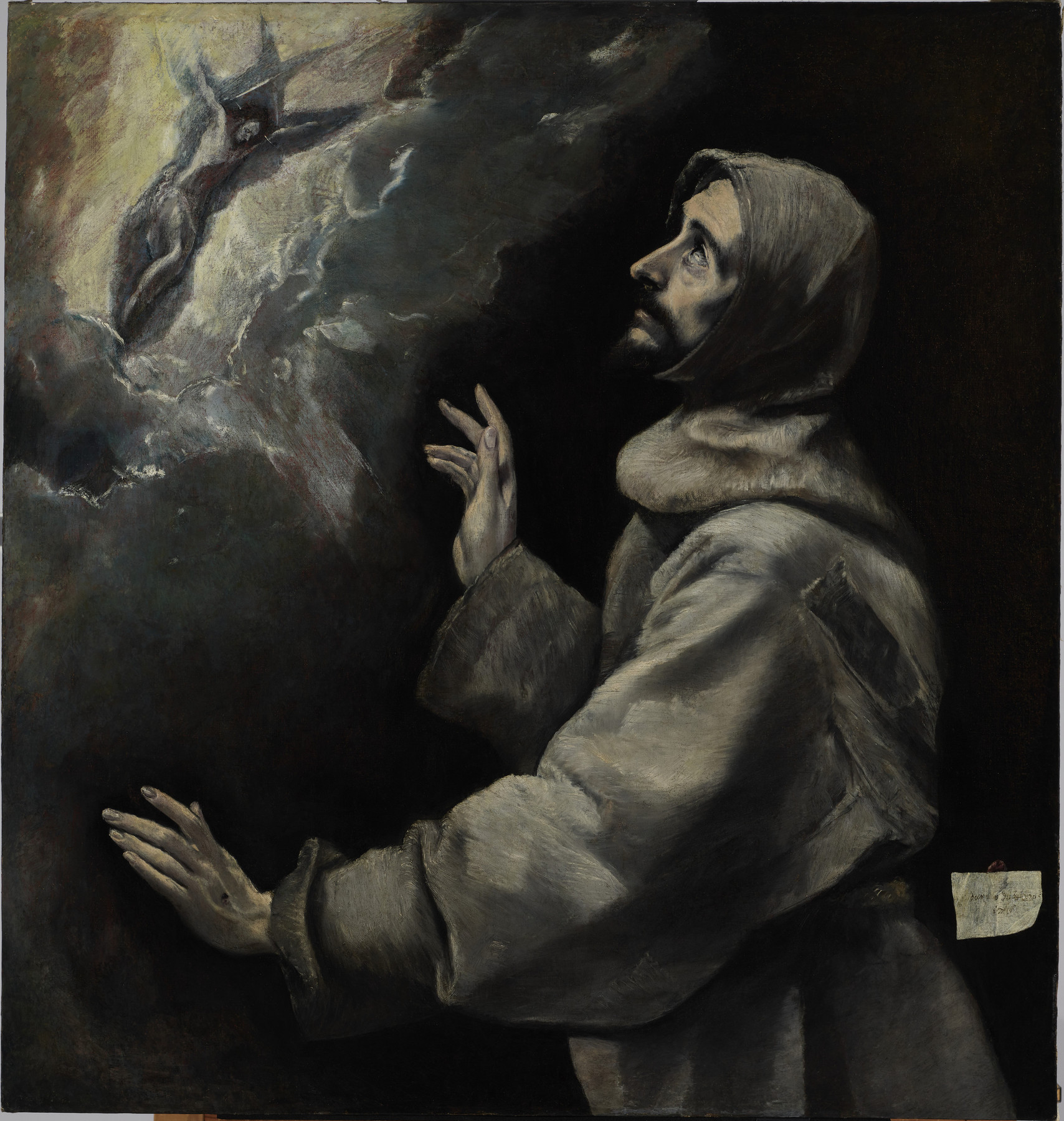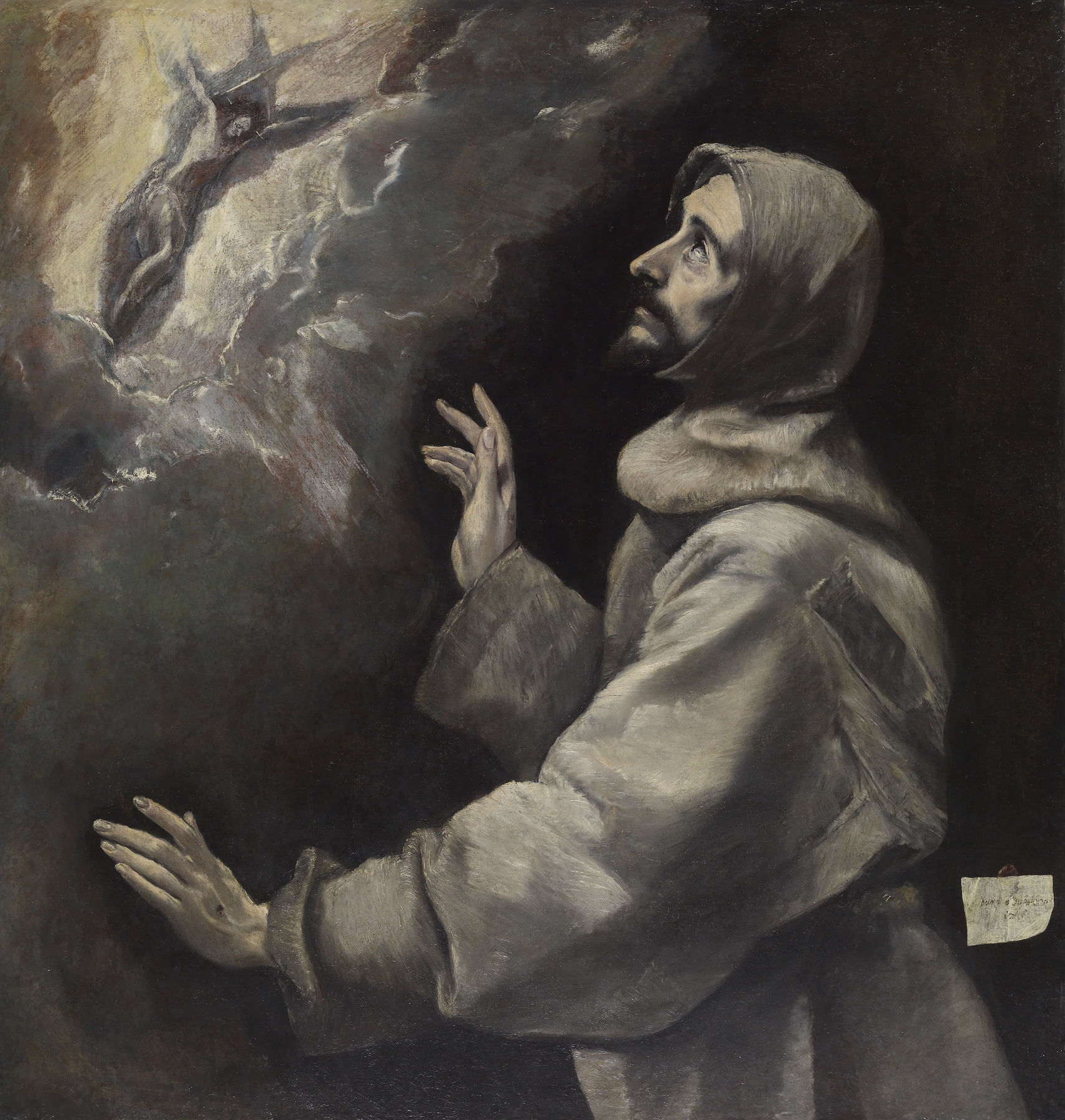Saint Francis Receiving the Stigmata
(Renaissance Europe )
In 1226, St. Francis of Assisi had a vision of a seraph (the highest order of angels) with an image of the crucified Christ amid its six wings, from which he miraculously received the stigmata - the wounds inflicted upon Christ during the Crucifixion. El Greco depicts the wounds on Francis's elegant hands, and the saint's transfixed gaze conveys the spiritual impact of the experience. The absence of setting, the brilliance of the apparition, and the elongation of the figure contribute to an other-worldly effect. This is accentuated by the white paint and loose brushstrokes, which suggest rather than define the forms and which the artist learned to exploit in Venice before settling in Spain. The ephemeral quality is magnified by the contrast of what appears to be a real piece of paper, stuck to the canvas, ephasizing the physicality of the painting as an object. It bears the words "Domenikos Theotokopoulos Made This" in the artist's native Greek, meaning something close to "[the man] dedicated to the God-bearing son made this". The miraculous vision was a favorite subject of El Greco's, and he, himself a lay Franciscan, created a quintessential expression of the mystical and emotional spirituality of the contemporary Counter-Reformation movement.
Inscription
Provenance
Provenance (from the French provenir, 'to come from/forth') is the chronology of the ownership, custody, or location of a historical object. Learn more about provenance at the Walters.
Don Marcello Massarenti Collection, Rome [no. 351]; Henry Walters, Baltimore, 1902, by purchase; Walters Art Museum, 1931, by bequest.
Exhibitions
| 2019-2020 | Greco. Galeries nationales du Grand Palais, Paris; The Art Institute of Chicago, Chicago. |
| 2014-2015 | El Greco. National Gallery of Art, Washington. |
| 1982 | God's Minstrel: St. Francis of Assisi. The Walters Art Gallery, Baltimore. |
Conservation
| Date | Description | Narrative |
|---|---|---|
| Examination | examined for condition | |
| 3/1/1951 | Treatment | cleaned; infrared spectroscopy; inpainted; loss compensation; re-framed; x-ray |
| 7/19/1984 | Examination | examined for loan |
| 8/1/1986 | Treatment | coated; examined for loan; filled; inpainted; surface cleaned |
| 7/13/1988 | Examination | examined for condition |
Geographies
Spain (Place of Origin)
Measurements
H: 40 1/4 × W: 38 1/8 in. (102.24 × 96.84 cm); Framed H: 52 5/8 × W: 49 1/2 × D (with build-up): 4 3/4 in. (133.67 × 125.73 × 12.07 cm)
Credit Line
Acquired by Henry Walters with the Massarenti Collection, 1902
Location in Museum
Accession Number
In libraries, galleries, museums, and archives, an accession number is a unique identifier assigned to each object in the collection.
In libraries, galleries, museums, and archives, an accession number is a unique identifier assigned to each object in the collection.
37.424




